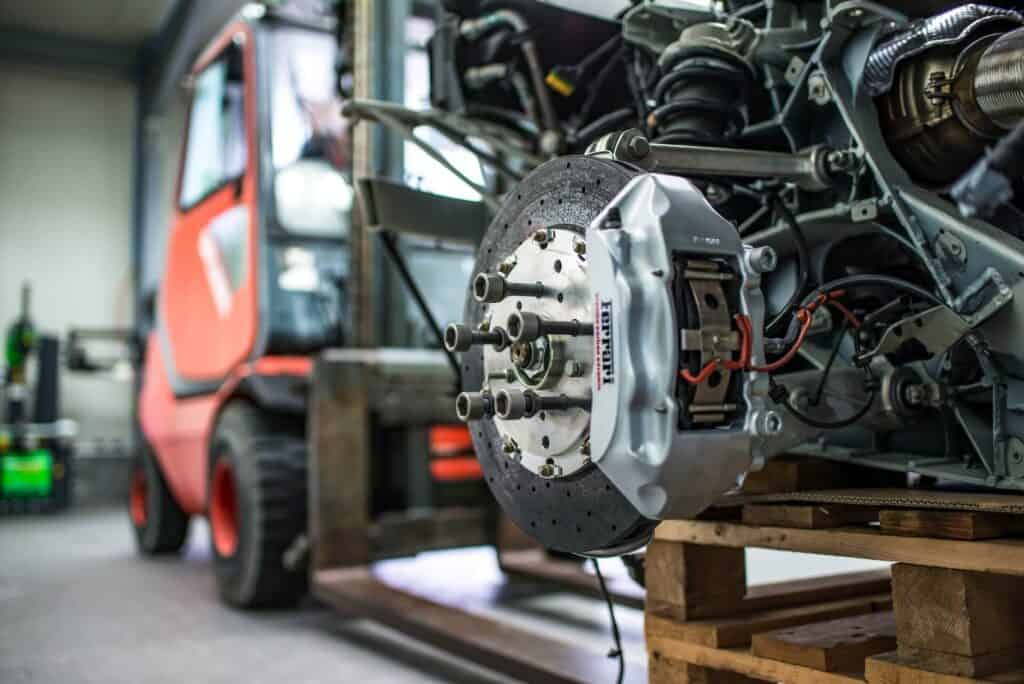Introduction: The Impact of Anti-Lock Braking Systems on Vehicle Safety
Did you know that the introduction of Anti-Lock Braking Systems (ABS) has significantly reduced the number of accidents on the road? This groundbreaking technology has made driving safer for millions of motorists across the globe. In this article, we’ll explore the fascinating world of ABS, its history, how it works, and its role in modern vehicle safety systems.
The Science Behind ABS: Understanding the Mechanics
At its core, ABS prevents a vehicle’s wheels from locking up during hard braking. This allows the driver to maintain steering control and avoid dangerous skids. ABS works by continuously monitoring wheel speed and releasing brake pressure when it detects a potential lockup. This rapid pressure modulation maintains optimal traction, ensuring the driver can steer effectively and maintain control of the vehicle.

Components of an Anti-Lock Braking System: Sensors, Valves, and More
There are three main components to an ABS:
1. Wheel speed sensors: These sensors monitor each wheel’s rotational speed, sending data to the ABS control module.
2. ABS control module: This computer analyzes the data from the wheel speed sensors and determines whether a wheel lockup is imminent.
3. Hydraulic valves: If the control module detects a potential lockup, it activates the hydraulic valves, which modulate brake pressure to prevent the wheels from locking.
How ABS Prevents Skidding and Maintains Traction
ABS plays a critical role in preventing skidding and maintaining traction during hard braking situations. When the driver applies the brakes, the ABS system continuously monitors each wheel’s speed. If it detects a wheel is about to lock up, the system rapidly modulates the brake pressure to that specific wheel, allowing it to maintain traction with the road surface. This process happens multiple times per second, providing real-time adjustments to the braking force applied to each wheel.
By preventing wheel lockup, ABS allows the driver to maintain steering control and vehicle stability, even on slippery surfaces. This is particularly important during emergency braking situations or when road conditions are less than ideal, such as on wet or icy roads. The ability to steer and control the vehicle while braking is crucial in avoiding collisions and other road hazards, making ABS an essential safety feature in modern automobiles.
The History and Evolution of Anti-Lock Braking Systems
While ABS may seem like a modern innovation, the concept dates back to the 1920s, when it was first used in aircraft. Over the years, ABS technology has evolved and improved, eventually finding its way into automobiles in the 1970s. Today, ABS is a standard feature in most vehicles, making driving safer and more predictable.
ABS vs. Traditional Braking: A Comparative Analysis
When comparing ABS to traditional braking systems, the primary difference lies in their response to hard braking situations. In a traditional braking system, applying excessive force to the brake pedal can cause the wheels to lock up, resulting in a loss of traction and steering control. This can lead to skidding, which increases the risk of accidents and makes it difficult for the driver to maneuver the vehicle effectively.
On the other hand, ABS prevents wheel lockup by continuously monitoring wheel speed and modulating brake pressure as needed. This allows the driver to maintain steering control and vehicle stability even during emergency braking situations. ABS is particularly beneficial on slippery surfaces, such as wet or icy roads, where maintaining traction is critical. By preventing skidding and enabling better control, ABS significantly reduces the risk of accidents, making it a vital safety feature in modern vehicles.
Common ABS Issues and Troubleshooting Tips
Like any technology, ABS can experience issues that may impact its performance and safety benefits. Some common problems include faulty wheel speed sensors, malfunctioning control modules, and defective hydraulic valves. Dirty or corroded connections can also lead to erratic ABS behavior. When encountering an ABS issue, you’ll often see a warning light on your dashboard, indicating that the system requires attention.
To troubleshoot ABS problems, start by checking for any diagnostic trouble codes (DTCs) stored in the ABS control module. A scan tool can help you retrieve these codes, which will point you in the right direction for further investigation. Keep in mind that ABS repairs can be complex and may require specialized tools and expertise. If you’re not confident in your ability to diagnose and repair ABS issues, it’s best to consult a qualified mechanic who can address the problem effectively and ensure your vehicle’s safety.
The Role of ABS in Modern Advanced Driver Assistance Systems (ADAS)
ABS is a foundational technology for many modern ADAS features, such as electronic stability control and collision avoidance systems. These advanced systems rely on the ABS to help maintain vehicle control and prevent accidents, further enhancing driver safety.

Maintenance and Care: Ensuring Your ABS Remains Effective
Regular maintenance is essential for ensuring your ABS remains effective and continues to deliver optimal safety benefits. One key aspect of ABS maintenance is routinely inspecting the brake system, including brake pads, rotors, and fluid levels. Worn brake components can impact the overall performance of the ABS, so timely replacement is crucial. Additionally, maintaining the proper brake fluid level and using the correct type of fluid for your vehicle is vital for the hydraulic components to function correctly.
Aside from brake system maintenance, it’s important to pay attention to any warning lights or unusual behavior related to your ABS. If you notice the ABS warning light on your dashboard, this could indicate a potential issue with the system that needs attention. Addressing ABS problems promptly can help ensure the system’s effectiveness and maintain the safety benefits it provides. When in doubt, consult a qualified mechanic to diagnose and repair any ABS issues, keeping your vehicle safe and reliable on the road.
Conclusion: Embracing the Benefits of Anti-Lock Braking Systems for Safer Driving
There’s no denying that ABS has revolutionized vehicle safety, making driving a more controlled and predictable experience. By understanding the mechanics, history, and maintenance of ABS, you can confidently embrace this life-saving technology and enjoy safer, more secure driving.
